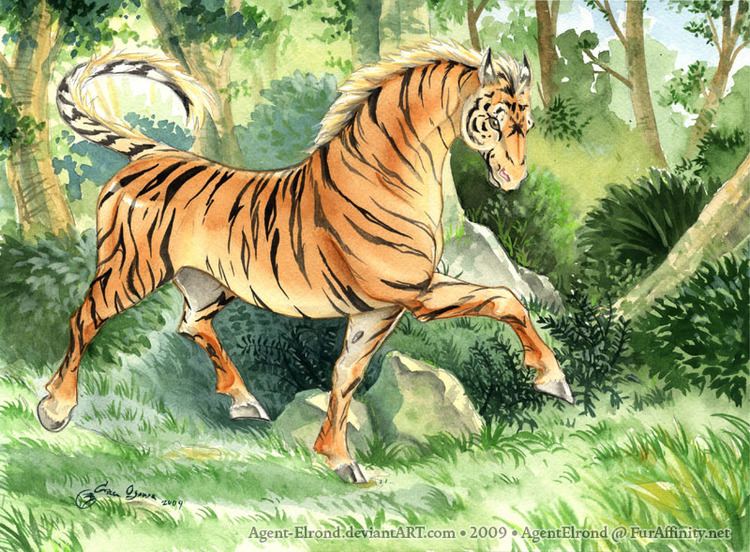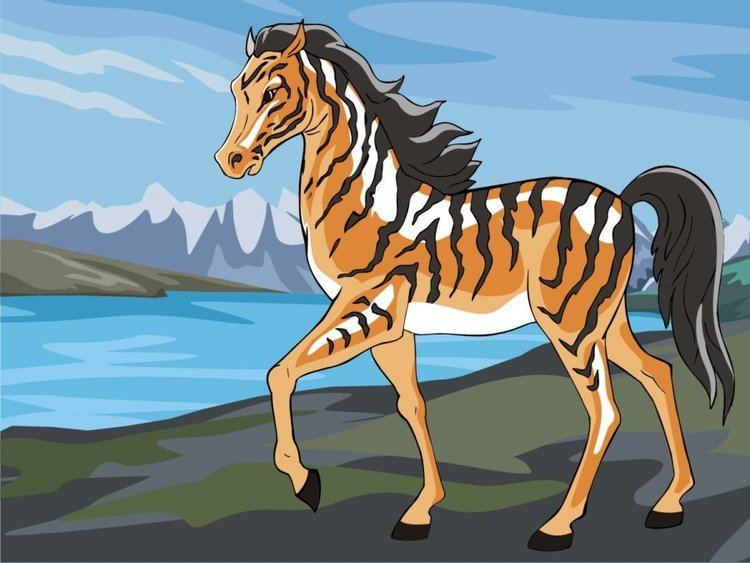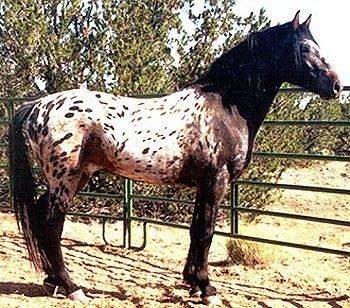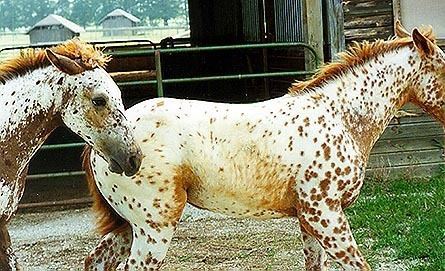Scientific name Equus ferus caballus Rank Breed | Higher classification Horse | |
 | ||
Distinguishing features Leopard coloring, ambling gaits, Spanish influence Similar American Cream Draft, AraAppaloosa, Pony of the Americas, American Walking Pony, Knabstrupper | ||
Tiger horses are gaited, spotted horses with a coat color much like the Appaloosa. The tiger horse can exhibit various ambling gaits including various lateral gaits called the "glider gait" or Indian shuffle, stepping pace, and running walk, as well as the diagonal fox trot. Registered horses must exhibit gaits without artificial aids and while flat-shod.
Contents

Characteristics

There are two types of tiger horse, the "Heavenly Type" and the "Royalty Type". Because the tiger horse breed is still in development, there are variations in conformation even within these two types. The tiger horse may have a straight or convex profile. Breeders are striving for the predominance of the convex profile as it reflects the Spanish ancestry of the breed. They have a large, eye which is well-placed on the head. Stallions have pert, forward-pointed ears while those of a mare are usually longer. The necks are arched and substantial and the chest is well-developed. Although the refinement of the legs and bone range throughout the breed, they should be clean-boned and have average sized hooves. The mane and tail may be full or sparse. Tiger horses may show the leopard complex traits, including a white sclera and striped hooves. They come in all base coat colors and often display the leopard pattern of an Appaloosa. Solid colors and solid-colored hooves are also accepted if the horse fits the tiger horse profile and has two registered parents. Markings such as socks are acceptable but not preferable, as they may be indicators of splashed white or sabino genes. Both types are have an average height of 15 hands (60 inches, 152 cm) or more, although Heavenly types may be 16 hands (64 inches, 163 cm) or more.

The Royalty type exhibit a strong ambling gait such as the Running Walk. They may have a lower set tail, upright pasterns, and straighter shoulder. They have uphill movement and a straight way of going. Royalty horses have an arched neck bending at the second vertebrae, moderate to high withers, and a moderate length back. They are popular for trail riding.

The Heavenly type may not be fully gaited, although they often exhibit the Glide or "Indian Shuffle." They are often more heavily muscled and taller, resembling a larger version of the Royalty type. They have more angled pasterns and shoulders and more closely resemble warmblood horses. They are suitable for dressage, cross-country, and hunter jumper events. According to the Tiger Horse Association, "breeders are advised to use only the exceptional Gliders in future breeding experiments, and only with Royalty horses." As of 2011, Heavenly types exhibiting glider gaits will only be registered if one parent is a registered Royalty type.
History
The Spanish had no word for leopard, so they called all cats with leopard-like markings, as well as tiger markings, simply tigers. In 1992, Mark and Victoria Varley began a breeding program to recreate "El Caballo Tigre," the spotted gaited horse that had been brought to America from Spain in the 16th century. They began breeding certain Appaloosa horses with non-spotted, gaited types. According to the Tiger Horse Association, "The Soulon's pheno-type is the ultimate profile for our modern day Tiger Horse Breed." The Soulon was a leopard-spotted horse bred in China during the Tang Dynasty around 618 AD. On January 1, 2011, The Soulon Tiger Horse Registry was created to promote this type and to award Registered Tiger Horses exhibiting the Soulon Type with the Soulon Seal of Approval.
